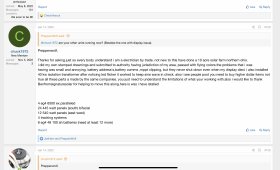I think the poster stated he updated software and that bricked one of the displays.The OPs system worked in USE and the 61 error is a known issue fixed by firmware. I'm not sure whatbelse you expect.
Its the user's responsibility to update the firmware before they even commission the system.
If you buy a computer/phone/tablet and don't update it, then it gets bricked by a known virus that was addressed in a update you didnt apply, it's your fault. Not the manufacturer or the store you bought it from.
Sometimes when you do updates the software might hang and that screws it up. Dunno wasn't there but it is advertised to do a function out the gate so the box should be opened up and programmed by the manufacturer or the distributor to the latest and greatest ....before shipping.... that way if it doesn't take it is on them to resolve. Again I don't have a dog in this hunt except might be a potential customer or might not. The good thing - it was resolved....



